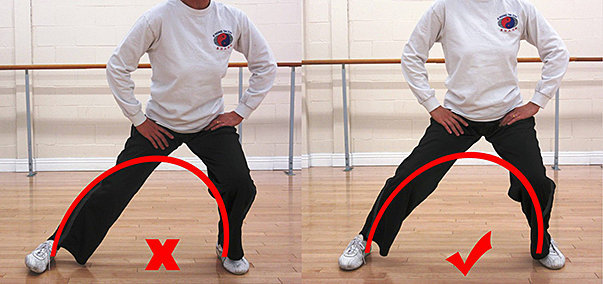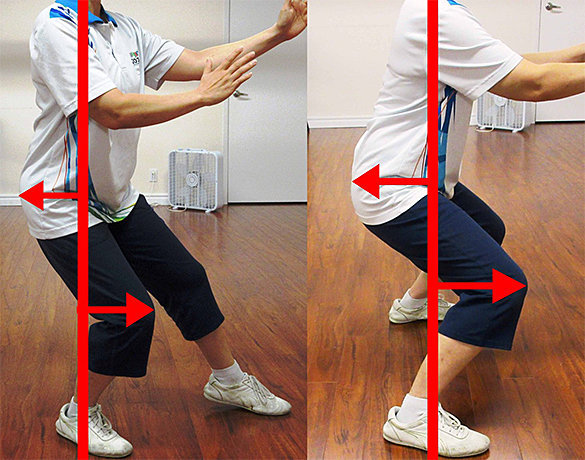Many of us suffer with knee pain, whether due to injury or aging. Poor alignment of the spine, hips and feet also contribute to knee pain. When dealing with joint pain, our first thought is usually to rest the joint. While immobilization may be useful immediately following an injury, the truth is that a lack of mobility puts the joint at risk of sustaining greater damage.
It seems counterintuitive. Yet, in a randomized, clinical trial, scientists discovered that structured, moderate-intensity exercise significantly reduced mobility issues among older, sedentary adults. Continued movement proved to be essential for maintaining healthy joints with a full range of motion. When it comes to our joints—including the knee—we must keep them moving or risk compromising range of motion.
What if you are currently dealing with stiff, sore knees? Is movement advised in such instances? In a word, yes. The typical, sedentary lifestyle creates weak, atrophied muscles. This muscle imbalance contributes to knee and back pain. Movement helps restore joint health, strengthens the surrounding muscles which support joints and extends range of motion. Regular movement helps prevent muscle contractures—tightened or shortened muscles which cause stiffness in the joints.
If you’re already suffering with knee pain, you must be mindful about the type of movement you choose. Gentle, low-impact movements, like those used in tai chi, can be therapeutic.
Low Impact Movement is Essential to Good Knee Health
Why is movement superior to immobilization when it comes to treating sore joints? Compression of the joints releases synovial fluid which lubricates the joints, allowing them to glide more easily.
High-impact movements—like jumping—release beneficial synovial fluid, but also put stress on knee and ankle joints. Conversely, slow, low-impact tai chi movements compress the joints, releasing essential synovial fluid and sending much-needed nutrition to the joints, without putting undue stress on them. This makes tai chi a highly-accessible form of exercise that one can adopt even at a very advanced age.
Protect Joints by Strengthening Supporting Muscles
Muscle imbalance is the root of posture and joint problems. Weakened muscles, poor body mechanics and other imbalances in the body strain joints and muscles. Tai chi combats muscle imbalances with its focus on correct posture and proper alignment of the body during each movement. This protects the joints by strengthening weak supporting muscles.
Tai chi is a weight-bearing exercise. Body weight is slowly shifted from one leg to the other, strengthening and toning thigh muscles. As we move, we focus on the proper alignment of the spine and the placement of the hips, knees and feet. Our balance improves, reducing the likeliness of stumbles or falls which can lead to knee injuries.
A continued tai chi practice increases awareness of body placement as we move throughout the day. More conscious of the importance of proper alignment of the hips and spine, we give more thought to how we stand, walk and sit. Bad postural habits like slouching are corrected. Improved biomechanics helps prevent injuries to the knees, hips and back.
Alleviate Knee Pain with Tai Chi

The knees are fragile joints which take a lot of abuse during our lifetimes. No wonder osteoarthritis of the knee is one of the most common complaints once we reach middle age. In addition to improving knee health and function, tai chi increases mind/body awareness, which helps alleviate knee pain. According to a recent study of patients suffering with knee osteoarthritis that was conducted by researchers at Tufts School of Medicine, patients who followed a 12-week tai chi program derived the same pain relief benefits as those who took physical therapy for six weeks and exercised at home for another six weeks. The benefits were long-lasting—still in effect a year after the study began.
Compared to the costs of physical therapy, tai chi is a far more economical option for alleviating knee pain. The study concluded, “Standardized tai chi should be considered as an effective therapeutic option for knee osteoarthritis.” However, a reduction in knee pain was only one of the benefits the study’s tai chi participants derived from their practice. The tai chi group also experienced a higher quality of life and a sharper reduction in depression symptoms.
Protect Your Knee Joints During Tai Chi Practice
Some may be surprised to learn that tai chi improves knee health and function. The deep, bent knee leg stances make some people fearful that tai chi may be hard on the knees. The truth is any exercise may potentially cause knee pain, if not performed properly. Tai chi is no exception.
The key to experiencing the many benefits of tai chi without injuring the knees lies in proper alignment of the body during each stance. Knowledgeable tai chi instructors understand how critical proper alignment is for a safe, lifelong tai chi practice. An experienced tai chi instructor will begin by teaching you how to properly position your body during each movement.
Make slow, easy movements. The head should be in line with the shoulders. The shoulders should be above the hips. The hips should line up above the heels. Weight should be distributed evenly in the feet.
Don’t try to bend the knees too deeply when you first begin your practice. Start slowly with higher stances. As your joints and muscles become stronger, try progressively lower stances. You’ll be able to deepen your leg bends and hold them longer.
Each pose requires proper alignment of the spine and hips. An experienced tai chi instructor will demonstrate how to properly align the knees as you shift your weight. (See accompanying photos.) Proper alignment of the spine, hips and knees prevents undue stress on key supporting muscles. This alleviates stress which could injure the knee or aggravate an existing injury.
Focus on correct alignment as you learn each stance. Proper execution of each movement will become second nature. Conversely, bad habits, once established, take more effort to correct. If you find a move difficult or uncomfortable, consult with your instructor for tips on how to perform the move safely and properly at your current fitness level.
A lack of mobility weakens and shortens muscles, causing joints to stiffen. When executed correctly, gentle, weight-bearing movements like sitting, squatting and bending will stretch and strengthen thigh muscles, which support the knees. Movement increases synovial fluid in the joints, nourishing and lubricating them. The joints become more slippery and move more easily.
Tai chi—with its gentle, flowing, low-impact movements—can be an essential component in a fitness regimen designed to keep knees healthy and pain-free with a full range of motion. Try a tai chi class led by a knowledgeable, experienced instructor today to discover how tai chi can strengthen and protect your knees.







Want to learn tai chi exercises for strengthen my knee and want to resolve ligament issue
Our Tai Chi Basics class teaches proper posture and stances prior to learning any exercises or movements. This is to help students learn tai chi safely protecting their knees and back. You are welcome to try our Tai Chi Basics class either in-person or virtually by enrolling for the complimentary trial pacakge.
It takes time and practice to strengthen the necessary muscles and for injuries to heal, in the meantime, you want to learn how to exercise safely.
[…] https://www.taichi.ca/2016/11/08/strengthen-and-protect-knee-joints-with-tai-chi/ […]
Hi, this is a really interesting and well written piece. Thank you. I’m really keen to practice safely as I often meet people with bad knees! (Not necessarily from tai chi!) Do you have any further reading suggestions to aid my tai chi practice? Thank you so much.
Glad that this article has been helpful. You can also read this other blog: Improving biomechanics with tai chi.